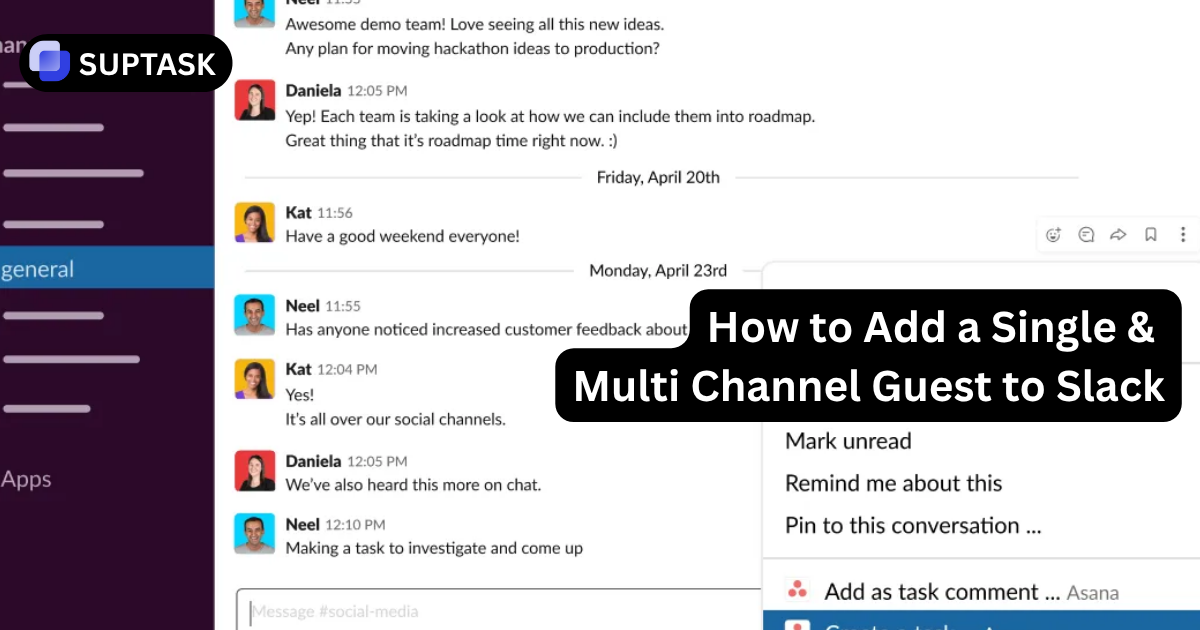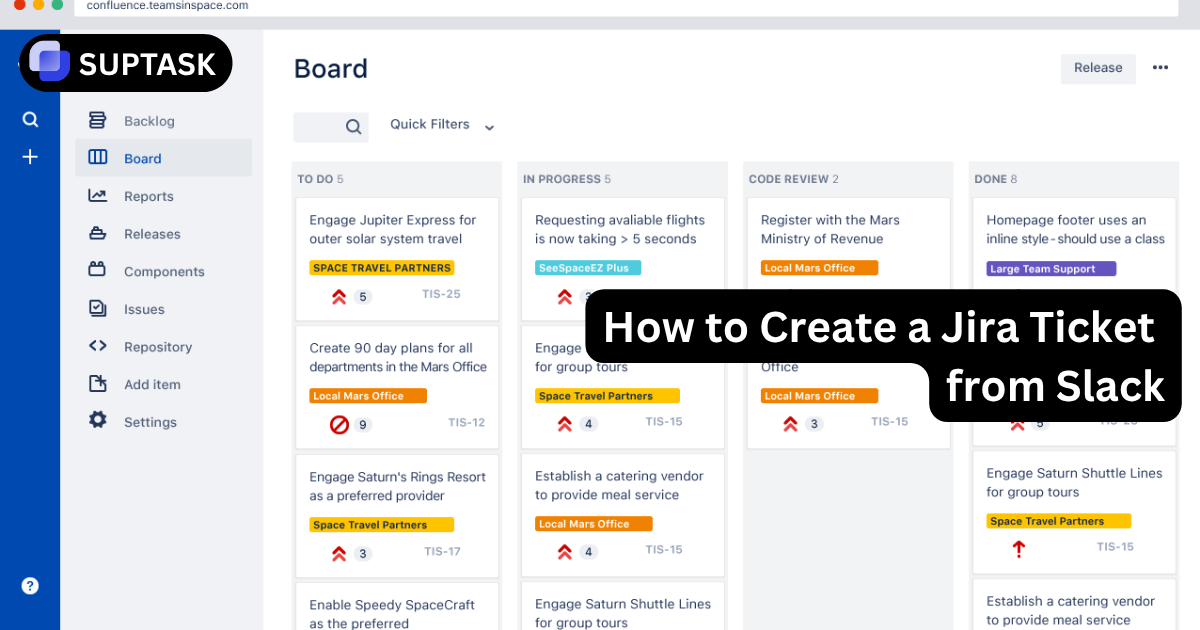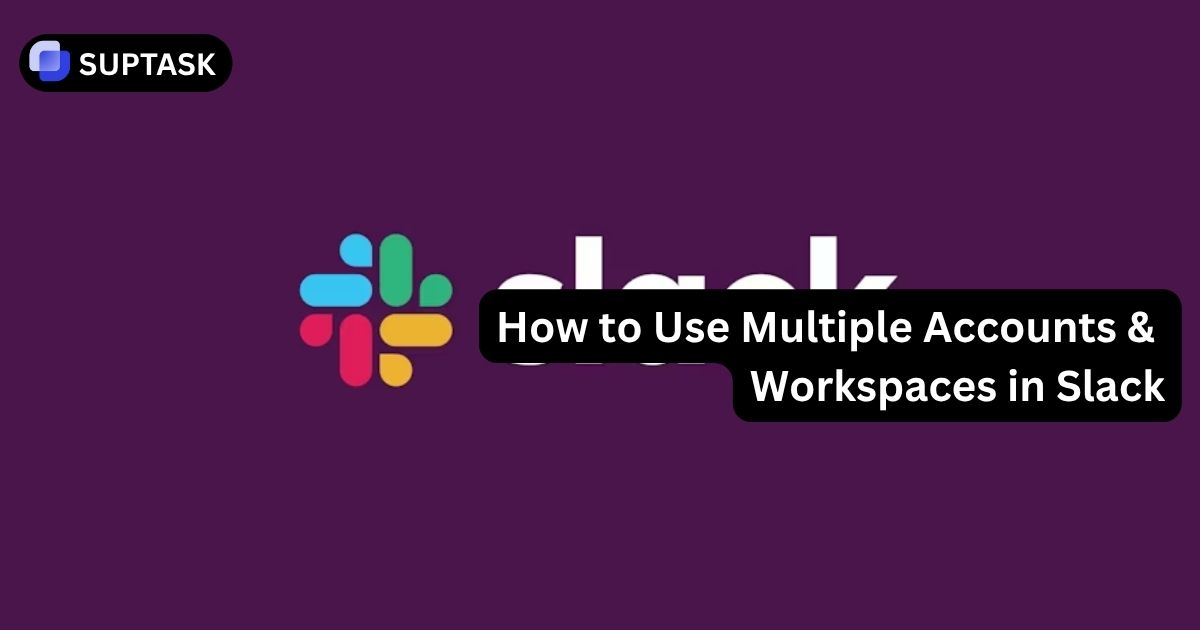An excellent system to manage incidents keeps things running smoothly and keeps the time down when things are out of order. It also helps fix issues very fast. The best tools can track problems as well. They can also get the team to work together efficiently. In this piece, you will find the 13 tools that work well for incidents. Some are software, and some are ways to respond to incidents. Some work in the cloud and others are set to work on different needs. There are both solid and cheap IT tools.Incident management tools are valuable for quick issue-solving, reducing downtime, and improving teamwork.
The article covers the list of 13 top incident management tools along with their advantages of being cloud-based platforms, automated solutions, and incident response management. If you are looking for powerful IT tools or budget-friendly alternatives, the solution that will ensure things run smoothly is here!
The Best Incident Management Tools for 2025:
- Suptask
- New Relic
- Corporater
- SolarWinds Service Desk
- ServiceNow IT Service Management
- BigPanda
- Spiceworks
- NinjaOne
- Freshservice
- ManageEngine ServiceDesk Plus
- Splunk On-Call
- Uptime by Better Stack
- PagerDuty
1. Suptask

Suptask stands out in incident management tools with its advanced AI functionalities as a halp alternative. This tool enhances the reporting of problems and solutions, delivers quick summaries for efficient ticket management, and supports collective knowledge of all tickets. It also has accessible search features within applications like Slack.
- To enhance your experience on Slack, try the free version of Suptask.
Suptask boosts Slack's support ticket features with:
- A clear display for fresh and given tasks, helping bosses track task fix time to meet service rules.
- Custom reports to check crucial incident management measures.
- Smooth links with systems like GitHub and Zendesk, making Suptask great for managing work incidents.
Pricing
- Free Plan: $0 per agent/month. Includes Slack ticketing integration, private and direct message (DM) ticketing, group and channel ticketing, multiple forms, and custom fields. Limited to 10 tickets per month.
- Light Plan: $7 per agent/month. Offers all Free Plan features plus unlimited tickets, multi-teams and inboxes, business support, dashboard analytics, multiple admins, user roles (RBAC), and customizable ticket overviews.
- Professional Plan: $13 per agent/month. Includes all Light Plan features along with advanced dashboard analytics, customizable web overviews, approvals and followers, AI assistant, Slack Connect support, data and API export, customer satisfaction tracking (CSAT), and white-label branding.
- Custom Plan: Tailored pricing for enterprise requirements. Encompasses all Professional Plan features plus email-to-Slack ticketing integration, Slack Enterprise Grid support, advanced custom analytics and automations, over 300 integrations, single sign-on (SAML/SSO), and SLA management.
For detailed information and to select the plan that best fits your organization's needs, please visit Suptask's pricing page.
2. New Relic

New Relic is a cloud-based platform focusing on monitoring and analytics. It offers robust monitoring tools and the ability to grow.
Users can set alerts on metrics they choose, leading to fast problem-solving by checking logs and tracking transactions. It gives a full view of backend and frontend links, speeding up pinpointing performance problems.
With its AIOps feature, New Relic groups similar events and points to likely causes. This reduces average detection, identification, and fixing times. With 700-plus integrations and ready-to-use bundles, setup is fast.
Pricing
New Relic’s pricing is simple and steady yet flexible. It ensures clients only pay for the resources they use.
Free Plan
- $0/month.
- 100 GB free data ingest, unlimited basic/core users, 1 free full platform user.
- Access to 30+ capabilities, no credit card required.
Standard Plan
- $10 for the first full platform user, $99/additional user (max 5).
- Core users: $49/user.
- Data: $0.35/GB beyond free 100 GB.
- Includes SSO, ticketed support (2-day SLA), analytics, and observability tools.
Pro Plan
- $349/user (annual) or $418.80/user (monthly).
- Core users: $49/user.
- Data: $0.35/GB or $0.55/GB (Data Plus).
- Includes advanced support (2-hour SLA), unlimited users, and Data Plus eligibility.
Enterprise Plan
- Custom pricing.
- Includes everything in Pro plus 1-hour SLA, compliance (FedRAMP/HIPAA), and priority ticketing.
Data Costs
- Original: 100 GB free, $0.35/GB after.
- Data Plus: $0.55/GB.
User Costs
- Basic users: Free.
- Core users: $49/user.
- Full platform users: $10-$349/user (plan-dependent).
3. Corporater

Corporater integrates incident management into GRC frameworks for a comprehensive approach. It digitizes the process to respond to incidents quicker and swiftly return to regular operations after an incident.
Corporater's solution includes flexible functions for noting incidents, watching their advancement, and handling investigations per organizational requirements.
It's crafted for any size from small ventures to big corporations, and it includes sophisticated reporting and analytics tools. These give organizations a clearer view of incident impacts while guaranteeing compliance oversight.
4. SolarWinds Service Desk

SolarWinds Service Desk, an ITSM (IT Service Management) tool, simplifies IT asset management by:
- Documenting, arranging, and ranking different incidents;
- Offering real-time dashboard insights for clearer visibility of service desk proceedings;
- Incorporating a unique Employee Service Portal where support requests can be lodged, and assistance staff can be reached.
SolarWinds Service Desk key features include
- An incident management software that speeds up problem-solving workflows;
- Asset management features for better control over tech environments.
- A comprehensive IT Services Catalog that comes with a mobile app
SolarWinds Service Desk aids firms in effectively handling service issues and requests, no matter where they are.
5. ServiceNow IT Service Management

When it comes to managing incidents, ServiceNow IT Service Management is top-notch. It boosts business automation through a system that ties together different IT services. This single platform improves current IT services. It includes applications for:
- Configuration Management Database (CMDB)
- Knowledge Management
- Incident Management
- Change Management
Here's what's inside ServiceNow ITSM:
- A Virtual Agent with smart chatbot tech for quick problem-solving with plain language
- Predictive Intelligence. It uses machine learning to make workflows more straightforward and faster
- It works with remote desktop support tools, sign-in programs, work suites, and approved integrations for various outside platforms.
ServiceNow's tech is a custom-made platform for swift incident and service management. It uses high-tech machine learning.
6. BigPanda

BigPanda stands out in incident management tools because it:
- Enhances traditional practices within incident management by implementing AIOps technology
- Streamlines issue identification, evaluation, and resolution through automated processes
- Accelerates incident detection for NOC and ITOps teams using pattern analysis from existing knowledge bases to facilitate early recognition
The suite of features BigPanda offers includes:
- Utilization of machine learning to accurately sort incidents, which minimizes mistakes made by humans while expediting the entire management process
- Simplification of communication workflows with automatic alerts and status updates directed at both internal stakeholders and customers
- In-depth analytics and comprehensive dashboards provide greater detail regarding incidents, identifying repetitive issues and prospective temporary fixes to enhance overall visibility into incidents.
7. Spiceworks

Spiceworks offers a no-cost incident management software that, while having an intricate interface, is backed by a substantial user community and provides essential features for incident tracking. The Spiceworks Cloud Help Desk boasts several critical capabilities.
- It consolidates the monitoring, ordering of importance, and administration of daily tasks and user queries into one centralized location.
- It supports organizations in their efforts to eliminate paper use and enhance the experience for end-users.
- Over 280,000 companies worldwide make use of it.
- Every year, it handles more than 14 million tickets.
Spiceworks Help Desk has multiple handy ticketing system features such as:
- Flexibility for businesses to adapt controls, workflows, and response management to meet their needs
- An easy user interface that lets clients open and change tickets through their web browser without extra apps
- A broad library of articles and guidelines filled with helpful information.
Despite drawbacks in its system or ease of use, possibly due to its no-cost approach, many tech professionals see Spiceworks as essential.
8. NinjaOne

NinjaOne is a cloud-based system. It has live updates, helps manage projects, and has tailored dashboards. It supports things like Macs, PCs, servers, and networks.
It helps control these devices and gives the organization an overview of the system's update status. Also, it helps to apply updates automatically.
NinjaOne is unique because it supports you from start to finish for free! They even help out within 60 minutes on average.
Customers love them - 98% approval! They are perfect for IT service providers because they have low-cost plans. You pay month-to-month for what you need. So, not only is it strong, it won't break the bank!
9. Freshservice

Freshservice is a service management platform. It offers many services like incident handling and change management. It is designed with ITIL standards in mind. This software gives a new spin on service management by focusing on the user's experience.
Its goal? Boost how well staff works, increase operations clarity, and improve investment return. Both IT services and business operations benefit from it.
Freshservice’s incident handling framework is excellent. Its tools help you document things quickly and analyze them effectively. Mainly, it helps get the service back to normal after disruptions. Automated emails confirm receipt of queries from users. Users can be confident that the company recorded all communications.
For customer problems, responders can use knowledge articles and ready-made responses, which makes solving these problems quicker.
10. ManageEngine ServiceDesk Plus

ServiceDesk Plus by ManageEngine is a complete platform for IT support and incident management. As a dynamic tool, it presents multi-channel functionality.
Its extensive suite of IT service management (ITSM) keeps IT services accessible round-the-clock. The platform also has a Configuration Management Database (CMDB). Its role is to manage the relationships and dependencies between different IT services.
There are numerous features in ServiceDesk Plus.
- An interactive self-service portal to increase service desk use
- A tailorability feature for easy integration within a company's distinct setting
- Instant chat for smooth interaction between technicians and users
- A helpful knowledge base to guide users in fixing recurring issues
- Advanced reporting tools to track request types, resolve speed, and request volume
These characteristics significantly improve support operations during the use of the software.
11. Splunk On-Call

Splunk On-Call, earlier known as VictorOps, offers incident management software. This is enriched with AI and machine learning features. This product provides
- Massive metadata alerts, accessible on any device
- Multiple engaging features include managing, rerouting, dismissing, or delaying alerts via its dedicated iOS and Android apps
- Automated steps to manage problems can speed up the escalation process, set up workspaces termed war rooms, and make post-incident review easier.
These tools reduce response time and keep the team focused on solving problems effectively.
Splunk On-Call comes with intelligent features like
- Automation supported by human thought to better decision-making and productivity on the platform
- Customizable alert control algorithms guided by machine learning use present operational data and past patterns
- Working with various external systems enhances the tool's flexibility and utility
12. Uptime by Better Stack

The cloud-based problem management tool Uptime by Better Stack focuses on system status tracking and providing alerts and a system for incident solutions.
It confirms incidents from at least three sources by conducting 30-second checks across various locations before sending out notices, decreasing false warnings. It can monitor services like web pages, APIs, POP3/IMAP email protocols, SMTP communication protocol standards, DNS framework, and other network monitoring duties.
Its essential features include:
- Websites or APIs get downtime? This tool automatically saves screenshots and error logs.
- It gives every detail about each incident.
- It works with many existing tools to enhance systems and apps.
- Handling incidents is easier as everything’s in a straightforward design, from detection to resolution.
13. PagerDuty

PagerDuty helps manage incidents. It tracks and resolves issues automatically. Cost is clear and adaptable - you pay as you use. The charges are $399 each month for 10,000 events. There's an Incident Response package at $59 per user/month, which includes a complete SaaS environment and Automation Actions.
PagerDuty can monitor unlimited systems. It has more than 700 ready-made integrations. You get unlimited email and push notifications with their plans. But they offer even more with Professional, Business, and Digital Operations packages.
This means you get global SMS and voice alerts without additional costs. This tool ensures effective practices during incidents and improves response strategies. In short, PagerDuty is a must-have resource.
Ready to Simplify Your Workflow?
Experience the power of streamlined task management with Suptask. Get started today and try our free version to see how Suptask can transform your productivity.
FAQ
Which is the top incident management tool?
Choosing the superior incident management tool depends on your needs and what works best for your organization.
ManageEngine ServiceDesk Plus, HaloITSM, and ServiceNow are popular tools for efficient incident management.
What's the best incident prevention tool?
Immediate and regular training, given engagingly to increase safety awareness and provide society with reporting methods, is the best method for preventing incidents.
Its core function is vital in avoiding possible occurrences.
What's an incident management tool?
An incident management tool uses structured steps to turn alerts into action quickly. It lets people set rules that get things done faster when problems occur.
What makes up incident management?
There are five keys to managing incidents. First, identify the issue. Then, record and categorize it. Decide how urgent it is. Lastly, solve it.
This order keeps things organized during a service upset.
What's good about an AI incident management tool?
An AI incident management tool makes things easier. It plans tasks, applies trends, and suggests ways to manage tasks. This means fewer mistakes made by people.
Overall, it makes incident management faster and more accurate.













